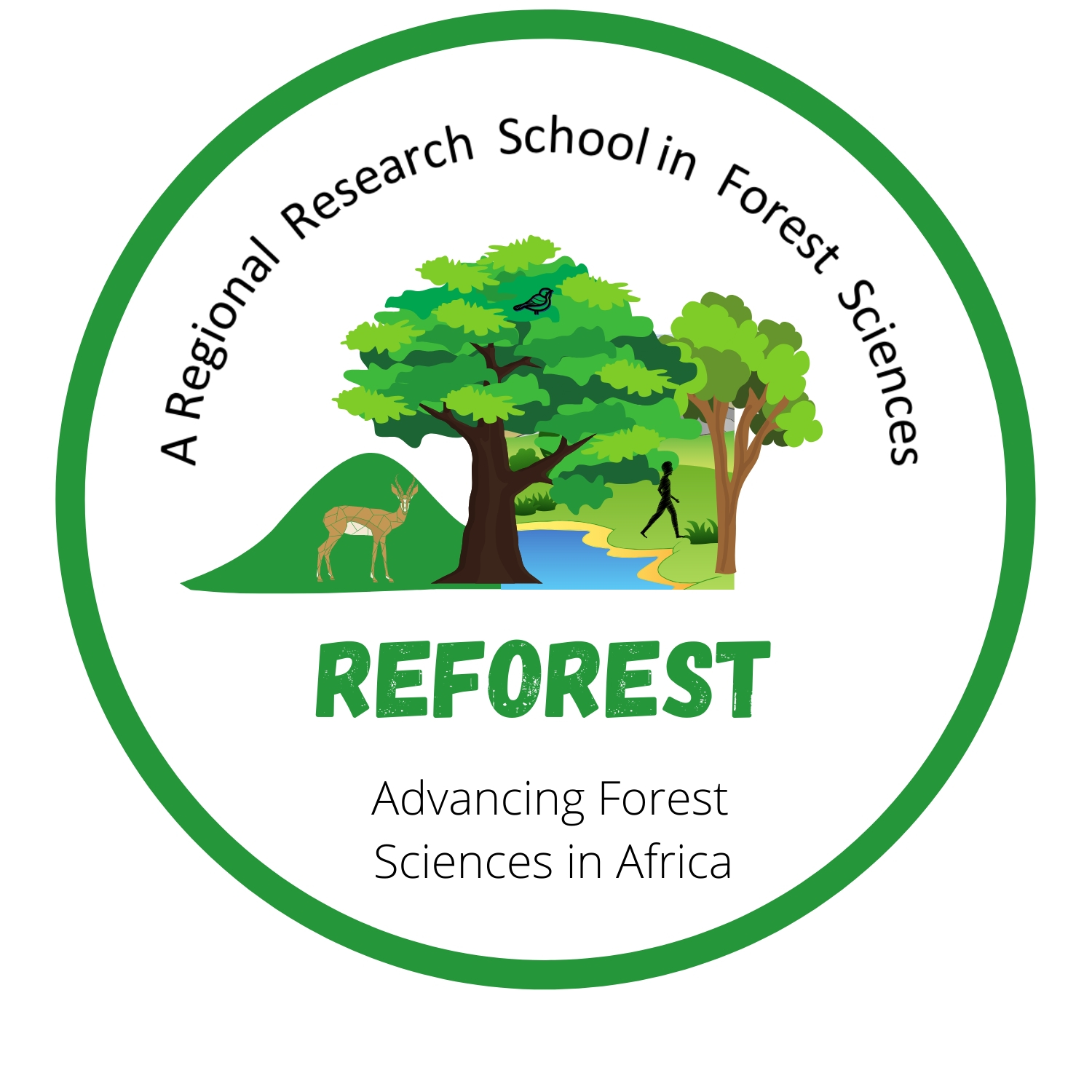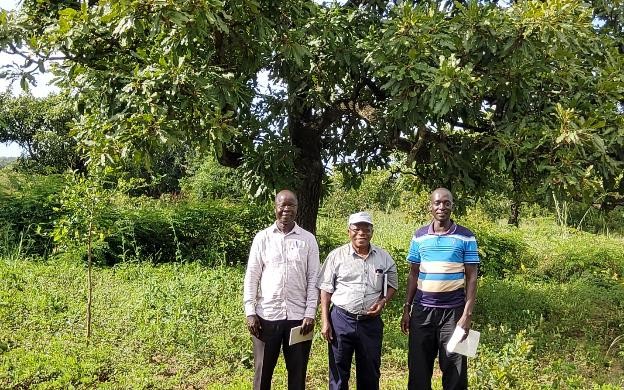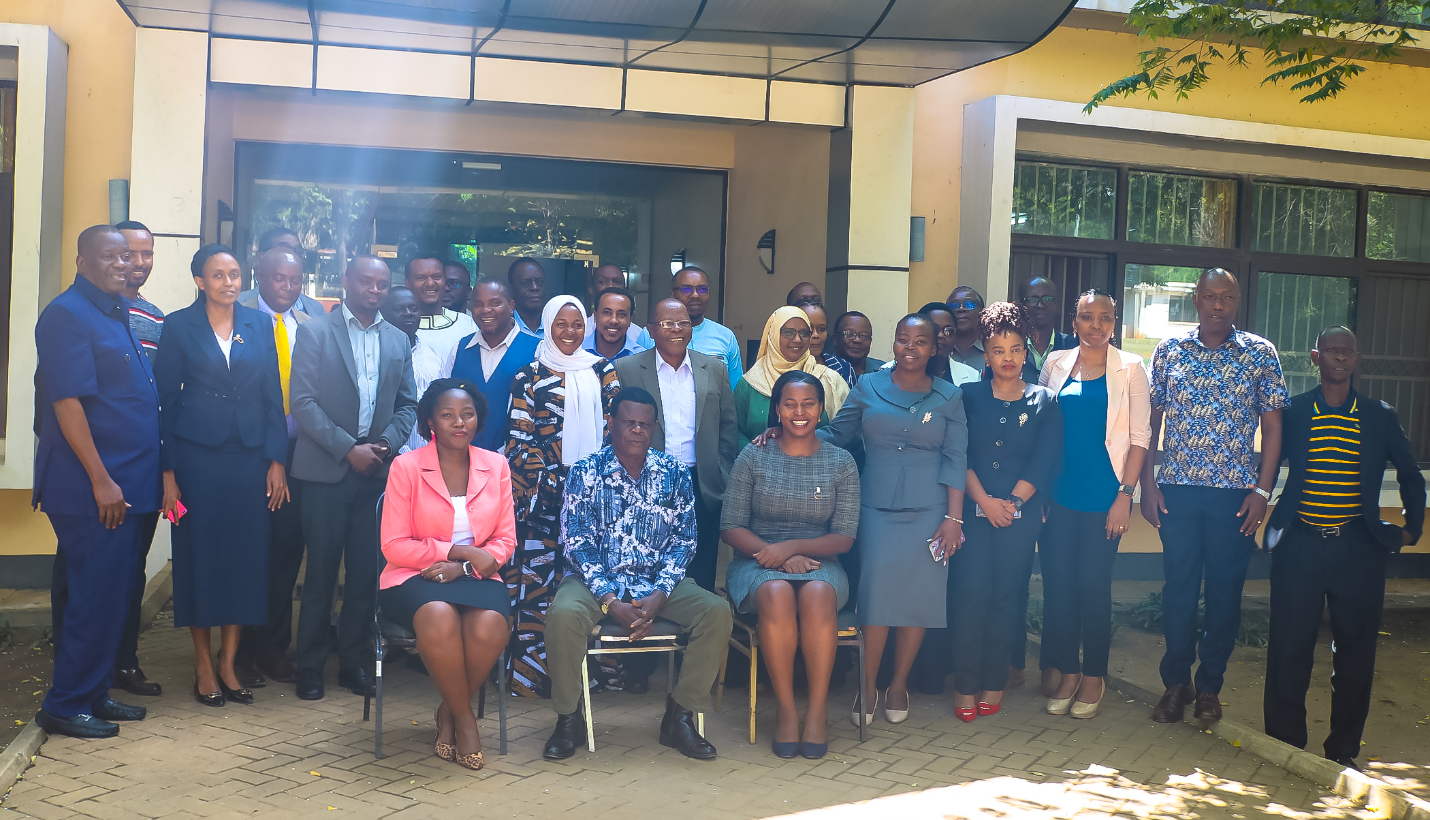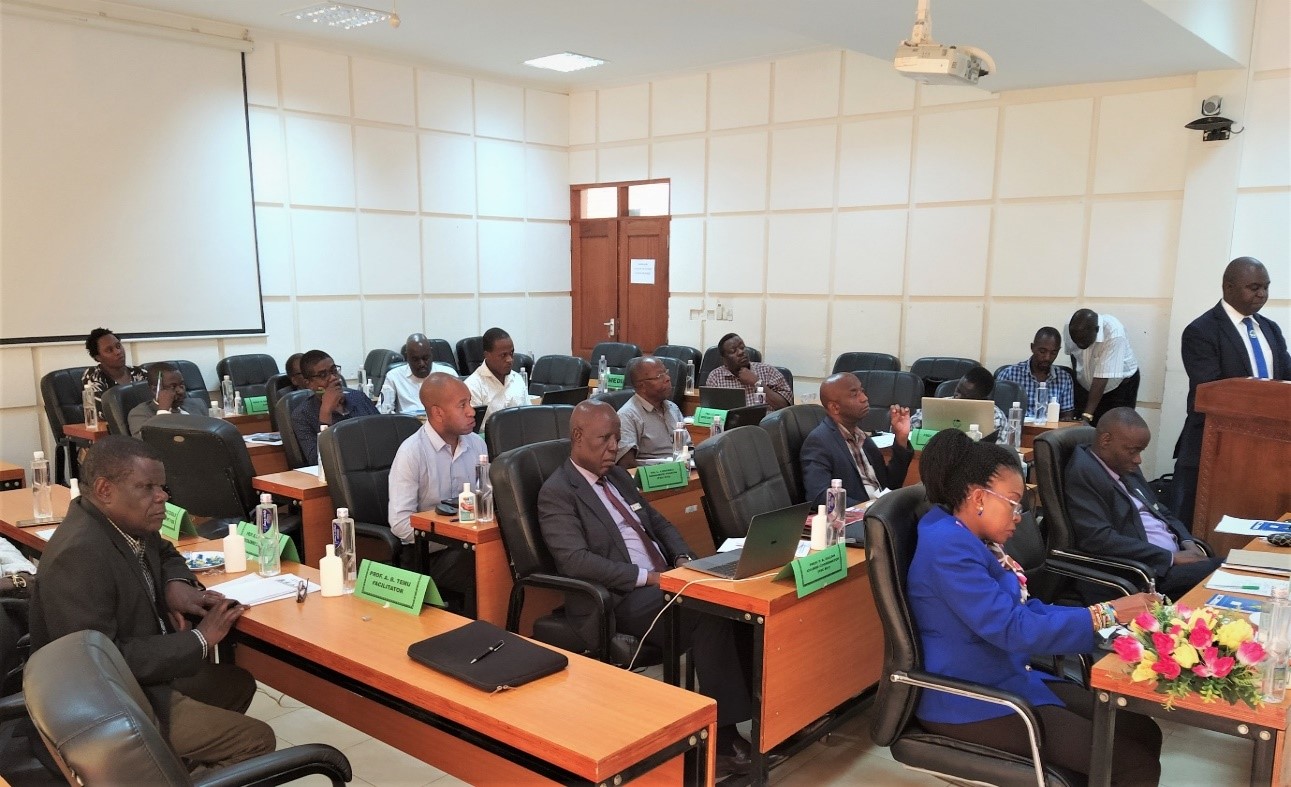Supervisory visitation by Prof. Philip Nyeko, Prof. SAO Chamshama and Daniel Obua (student) with one of the Vitellaria paradoxa tree in the background which is one of the germplasm sources. Photo credit: Patrick Abwango
Daniel Obua
PhD student under REFOREST Programme at Sokoine University of Agriculture
The shea butter tree (Vitellaria paradoxa C.F. Gaertn) is a wild fruit-bearing tree species that plays significant socio-economic and environmental role among rural communities in the Sub-Saharan Africa. Besides being a source of 10-25 % of household income in shea-production villages, its fruits are consumed by both rural and urban populations, leaves are used as fodder and its aqueous leaf extract is used as an ethno medicine in the local treatment of typhoid. While the pulp contains large quantities of essential nutrients such as vitamins, minerals, carbohydrates, crude fibre, and proteins; the kernel on the other hand is rich in fatty acids such as oleic, stearic, linoleic, and palmitic acids and its butter is a high–value shea nut fat used as an edible oil, antimicrobial and moisturiser in the food, pharmaceutical and cosmetic industries, respectively. The shea butter distribution stretches from Senegal in West Africa to Ethiopia and Uganda in East Africa covering 19 countries in the ’Shea belt’. The tree has two sub-species: namely paradoxa in West Africa and nilotica is East Africa.
The tree regenerates vegetatively from saplings, stumps, and roots left on farm during weeding, protection through bye-laws, and its semi domestication crop management through cutting the trees which are not killed and if left, will grow back in a coppiced manner during fallow period but the older shea trees are being deforested by expansion of human settlement, farmlands, and high demand of its timber for firewood and charcoal production. Its population is also threatened by over collection of fruits for oil extraction. Besides its seeds being recalcitrant, land management regimes like young fallows, old fallows and current fields have influenced its population structure and regeneration. Such recalcitrant nature has impacted its natural regeneration and genetic improvement as well as landscape restoration initiative such as The Great Green Wall Initiative due to scarcity of its seedlings.
In Uganda, shea parklands are characterized by a majority of old trees (6.5-7.5 trees/ha – dbh >30 cm) and few young trees (0.66-2.5 trees/ha – dbh < 30 cm). Fruit productivity is challenged with ageing, slow growth, long juvenile phase, resulting in high variability. There are no documented silvicultural requirements.
Traditionally, V. paradoxa regeneration takes place in farm fallows. However, with cross-pollination, these semi domesticated-managed stands consist of heterozygous individuals with variable crop production. The need to produce superior true-to type varieties to capture superior genetic traits, has thus, encouraged research into its clonal propagation in West Africa though with limited success in vitro. In vitro propagation of woody species has become an extensively used technique not only for the fast regeneration of superior germplasm, but also to decrease the post-propagation juvenile period and for conservation purposes, as well as being a vital production link between multiplication, conservation, and sustainable utilization.
The general objective of my research is to develop a standardized propagation protocol of Vitellaria paradoxa for enabling large scale production of superior planting material for enhancing its on-farm planting and conservation in Uganda. Presently, an in vitro propagation protocol using both somatic embryogenesis (SE: Plate 1) and shoot organogenesis (Plate 2) are being undertaken at Namulonge National Crop Resources Research Institute in order to develop a propagation technique for the rapid multiplication of superior planting material that is fast growing (hairy ethno variety). Sterilization and media protocol that promote shoot proliferation has been developed as well as SE protocol for calli growth. The developed calluses has been sub-cultured for calli multiplication that shall be further subjected to different reagents concentrations that will lead to embryo maturation.
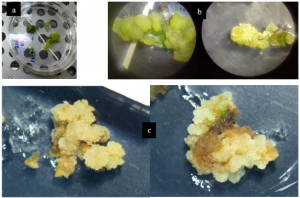
Plate 1: SE callus developmental stages from a-c. The c-stage has been sub-cultured for calli multiplication for further experiments. Photo credit: Daniel Obua
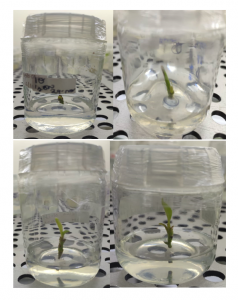
Plate 2: Vitellaria paradoxa shoot proliferation in vitro. Photo credit: Daniel Obua
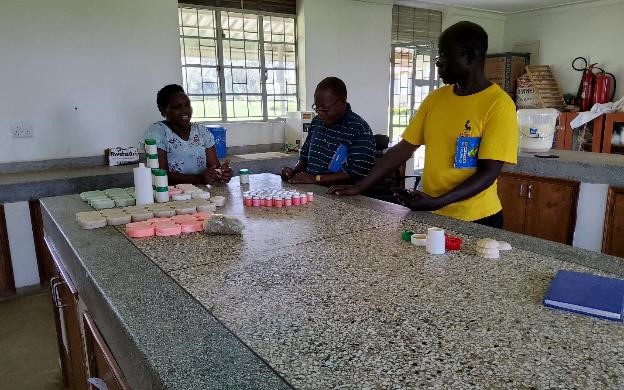
Research technician Gloria Mutonyi of Ngetta Zonal Agricultural Research and Development Institute, showing the different shea butter tree products being developed to Prof. SAO Chamshama, Prof. Philip Nyeko. Photo credit: Daniel Obua
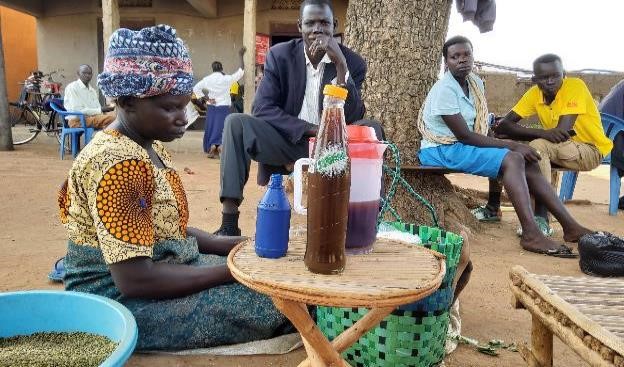
A lady selling shea oil in Olarokwon trading centre, Otuke district- Uganda at approximately 1 US dollar for 300ml bottle. Photo credit: Daniel Obua
